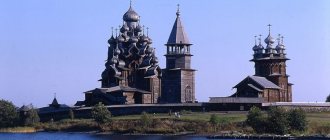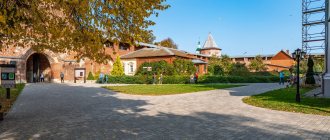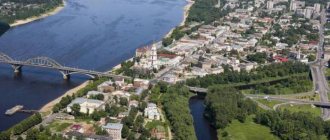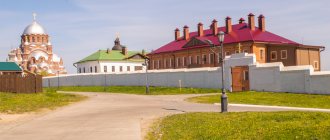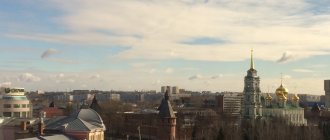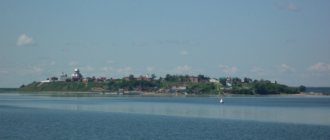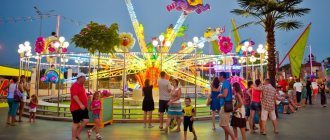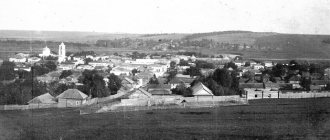The amazing and mysterious island of Kizhi is a place that has become a real symbol of the skill and talent of the architects of the Russian North. Today there is a museum-reserve included in the List of UNESCO World Cultural Heritage Sites.
The island is located in the northern part of Lake Onega, 68 kilometers from Petrozavodsk, and is the most popular attraction in Karelia after Valaam Island. Tourists come here from all over Russia, from the nearest Scandinavian countries, from the Baltic states and Western European countries, from Asia and even from overseas.
The most interesting objects of the open-air museum are the fabulous Transfiguration and Intercession churches, a bell tower with a hipped dome, a windmill with eight wings, the chapel of Michael the Archangel and the Oshevnev house-museum, as well as ancient huts and outbuildings brought here from other places in Karelia and organically complementing the overall historical picture.
Our article is about the island of Kizhi and its attractions.
Kizhi Island: interesting facts
- It is believed that the island of Kizhi got its name from the Karelian word “kizhat”, which means “playground”. Archaeological scientists are of the opinion that pagan rituals and ceremonies took place here in pre-Christian times.
- Most of us are accustomed to pronouncing the word “Kizhi” with the emphasis on the second syllable, but philologists and local residents argue that the spelling correct option is to pronounce the name of the island with the emphasis on the first syllable.
- In addition to the historical and architectural museum, there are three villages on Kizhi Island - Kizhi, Vasilyevo and Yamka. Each of them has only two or three courtyards, but this does not prevent them from attracting tourists every year - such landscapes and such a unique peasant flavor cannot be found anywhere else on the globe.
- The ensemble of the Kizhi Pogost received the status of a historical and architectural monument in the 20s of the last century, but it became an open-air museum only four centuries later - in 1966.
- During the years of occupation of Karelia by Finnish troops, the ensemble miraculously was not damaged - it was saved only by the fact that the Finns treated it with care in the hope of including the island in their country and making it an object of research for Finnish scientists. Of course, these plans were not destined to be realized, but they managed to preserve unique monuments of Russian wooden architecture.
- There is a legend that the occupiers still planned to destroy the island of Kizhi and all its attractions, however, seeing the incredible, almost unearthly beauty of the Intercession and Transfiguration churches, the pilots flying the bombers dropped bombs into the lake. However, no documentary evidence of this fact has yet been found.
- The Church of the Transfiguration on the island of Kizhi is made of pine logs, and its domes and barrels are covered with the so-called “ploughshare” - small plates carved from aspen. The use of such materials gives rise to an amazing combination of gray-brown shades of log church walls with the silver color of domes covered with aspen plates, reflecting all the colors of the surrounding nature. Against the backdrop of the cold northern sky, this picture takes on even greater beauty and mystery.
- It is believed that the island's churches were built without a single nail. This statement is only partly true - nails were not really used in the construction of walls and towers, but they were still used when covering domes with aspen scales.
- In the middle of the 20th century, the first large-scale restoration of the ensemble was carried out - it lasted 10 years. In the 80s, a metal frame was installed in the Transfiguration Church to prevent the building from collapsing. Unfortunately, it damaged some of the logs, so it was necessary to dismantle the iconostasis and the unique “sky” ceiling.
- The latest restoration of the ensemble began in 2010 and was completed in 2021. In order not to damage the general historical appearance of the buildings and to prolong their life, master restorers also used techniques that were used 300 years ago during the construction of the Church of the Transfiguration. On June 1, 2021, the church opened to visitors after 40 years.
Folk crafts in Kizhi
The museum-reserve also demonstrates traditional Karelian crafts. This way, tourists can get an idea of blacksmithing and watch the making of wooden utensils (as well as weaving them from birch bark). In the Oshevnevs' house, craftswomen demonstrate the art of embroidery, beading, sewing soft toys and other labor-intensive and eye-catching procedures. A tourist can buy something he likes. Similarly, near Elizarov’s house, an artisan makes wooden toys, which are also purchased as souvenirs.
Master classes on embroidery and beading are held at the Oshevnevs’ house
In addition, guests of the island can watch agricultural work: they harrow and plow a field in the open air, sow grain, thresh and winnow.
Sights of Kizhi Island
Kizhi Pogost
Website of the Kizhi Museum-Reserve: kizhi.karelia.ru Entrance ticket price: 600 rubles, pensioners, students - 300 rubles, children under 16 years old - free.
The main attractions of the island are, of course, the “summer” Church of the Transfiguration of the Lord, the “winter” Church of the Intercession, the tented bell tower and the surrounding fence. All together they form a single ensemble “Kizhi Pogost”, the like of which is unique in the whole world. It is located in the southern part of the island, and tourists mainly come for it when visiting the island for the first time. The word "pogost" in this case means administrative district. It is the objects of the Kizhi Pogost that are included in the UNESCO World Heritage List.
There are other buildings on the island that are very interesting for both adults and teenage children.
How to get to the Kizhi Museum-Reserve
The easiest way to get to Kizhi is from Petrozavodsk, from where the Meteor and Comet water transport runs to the island. Travel time ranges from 1 hour 15 minutes to 1 hour 30 minutes one way.
On the boat
High-speed boats depart from Petrozavodsk in the morning: approximately at 10.00, 11.00 and 12.00. Important: the number of flights may be reduced depending on the tourist flow, check the schedule for the date of interest.
Be careful: the high-speed Meteor and Comet operate only during the summer navigation period from May to October!
Water transport also departs in the opposite direction several times a day:
- from the beginning of navigation until August 31, it departs to Petrozavodsk from approximately 15.30 to 17.30;
- from September 1 until the end of navigation, transport in the opposite direction departs earlier: approximately at 14.30, 15.30, 16.30.
Thus, in the summer, about 4 hours are allocated for exploring the island if you buy a ticket for the flight “Petrozavodsk - Kizhi - Petrozavodsk” (then the departure time of the boat from Kizhi depends on the time of your arrival on the island). In the autumn, only 3 hours are allotted for visiting the museum-reserve.
In winter (from December to March) you can get to Kizhi by special transport “Khivus-10”, which operates on an “air cushion”. Operated by private carriers, the boat capacity is about 5 people.
Church of the Transfiguration on Kizhi Island
Church of the Transfiguration under restoration
The 38-meter-tall Church of the Transfiguration is the main monument of Kizhi island, probably known to every schoolchild. It is her photo that is published in history textbooks in topics about Russian architecture. The entirely wooden structure, topped with 22 domes, giving it the appearance of a royal palace from a Russian fairy tale, dates back to 1714. It is believed that it was built on the site of a church that burned down at the end of the 16th century. The Transfiguration Church is one of the most beautiful churches in Russia.
There are two main legends regarding the creation of this greatest architectural masterpiece. The first is that the designer and builder of the Transfiguration Church was none other than Emperor Peter the Great himself. He sailed along Lake Onega, saw a fallen forest on the shore and ordered the construction of a miracle, which has no equal and never will be.
The second legend says that the Church of the Transfiguration on the island of Kizhi was built by a talented craftsman named Nestor. Having finished the work, he threw the ax into the waters of Lake Onega - this was done so that no one would ever dare to build something as great again. Be that as it may, the behest of both Peter and Nestor has been fulfilled - probably, a master has not yet been born whose talent could surpass the skill of the creators of the Church of the Transfiguration of the Lord.
Even the shape of the church is atypical for religious buildings of that time - it is round. The creator chose the figure of eight as the main figure. There are three of them in the temple, each of them consists of two tiers and is lower in height than the previous one. Parishioners also took an active part in the construction of the temple. The temple is a “summer” building and is not open in winter.
Unfortunately, in the 80s of the last century, during the installation of the metal frame, the iconostasis and the unique “heavenly” ceiling were damaged - they had to be dismantled and transferred for storage to various museums. Since 2010, the Transfiguration Church has been under reconstruction. It must be said that the very frame, due to which part of the interior decoration of the church was damaged, still played a positive role - only thanks to it the building has not yet collapsed under its own weight.
Attached to the Transfiguration Church is a refectory - an equally unique structure, the logs of which tend to shimmer in clear and sunny weather. In the past, local residents used it for public meetings, courts or various holidays.
Architectural masterpieces of Kizhi
The Kizhi Museum Complex is a modern cultural center with excursion services in 8 languages. At first, the museum consisted of 3 buildings: wooden Preobrazhenskaya, Intercession churches and an old bell tower from the 18th-19th centuries. Over time, it was supplemented with chapels, houses, household items and outbuildings, carefully transported to the island from different parts of Zaonezhye.
Church of the Transfiguration
The special pride of the architectural complex on the Kizhi island in Karelia is the majestic Transfiguration Church, which is included in the list of the most beautiful religious buildings in the world. It was erected in 1714 on the site of a tented church that burned down in 1694. According to legend, at the end of construction, the carpenter Nestor threw his tool into Lake Onega so that no one else would do something similar.
Over the years, the building began to deteriorate and needed restoration. The main restoration work was carried out in 1949 – 1959. designed by architect Alexander Opolovnikov. Today, the church building, 37 meters high, is decorated with 22 domes installed on multi-tiered sloping roofs. Numerous onion domes make the structure extremely unusual, reminiscent of a fairy tale house. The main part of the building is made of pine, and only some elements are made of aspen and birch. Despite its complexity and scale, the church was built almost without nails. Small nails were used only to secure the “scales” to the domes.
The interior decoration of the temple is also amazing. The magnificent four-tiered iconostasis with 102 icons is surrounded by a gilded frame with carved expressive flowers and climbing vines. Most of the icons date from the 18th century, and two - “The Intercession” and “Transfiguration” - were painted at the end of the 17th century. The painted ceiling is crowned with an image of the Holy Trinity, as well as the forefathers surrounded by angels. Since the building has no heating, services are held only in the warm season.
Church of the Intercession of the Virgin Mary
Next to the Transfiguration Church is the Intercession Church. The building, erected in 1764, has a more modest appearance, but at the same time, both temple structures harmoniously complement each other.
The church is crowned with 9 domes, one of which is central. The pediment belt with crenellated elements is a distinctive decorative element of the temple. However, it also has practical significance, preventing moisture from entering the walls during precipitation. The same simplicity and restraint reigns inside the temple as outside. Unfortunately, the original iconostasis did not survive, so during restoration work in 1950 a new one was installed.
Tent bell tower
Many tourists come to Kizhi Island in Karelia to admire another highlight - the tented bell tower. It appeared in 1863 on the site of the remains of an older building and harmoniously fit into the space between the churches. Priest Stefan Romanovsky petitioned for the construction of a new 30-meter building. Over time, the appearance of the bell tower changed: in 1874 the upper part was changed, and in 1900 the decorative pediments along the perimeter of the cornice were dismantled.
Four sides of the bell tower are decorated with arched portals, two of which are decorative. A staircase of five flights leads to the tent-covered belfry. And the majestic ringing of its bells echoes throughout the area.
Complex fence
Recreated in 1959, the 300-meter-high fence with a watchtower and an impressive gate resembles a real historical fortress. A high foundation with a massive log frame and a gable roof only complements this impression. The central double-leaf gate is equipped on the western side at the Intercession Church. On the main facade of the fence there are windows with plank shutters, and the corner tower is crowned with a carved spire.
Church of the Resurrection of Lazarus
Legend has it that one of the oldest Russian wooden churches, dating back more than six centuries, was built by the Monk Lazar, the founder of the Murom Monastery. The building was transported to Kizhi in 1959. Since then, the church has undergone several restorations, during which a vestibule was added, the roof was replaced, the distortion of the frame was eliminated, and a new dome was installed. Now it is a simple and harmonious structure, consisting of three cages with gable roofs. The main interior decoration is represented by a two-tier iconostasis made of icons from the 16th–18th centuries.
Chapel of Michael the Archangel
The reserve complex is decorated with another typical northern religious building of the early 19th century - a chapel. Initially it was located in the village of Lelikozero, and was moved to the reserve in 1961. The chapel is crowned with a tent-roofed bell tower. Inside the building there is an ancient iconostasis with works from the 17th–18th centuries, which harmoniously flows into the ceiling image of Jesus Christ surrounded by the forefathers and evangelists. The program of excursions to Kizhi Island includes the opportunity not only to explore the chapel, but also to enjoy the chime, bell ringing and other bell ringings.
Eight-wing windmill
In addition to getting acquainted with religious buildings on the island of Kizhi, you can plunge into real ancient life. So here is one of the few remaining windmills in Karelia. It was built in the village of Volkostrov in 1928, and in 1976 it was transported to Kizhi and restored. Today the mill remains in working order. This is a two-story building, with stone millstones and a horizontal shaft with eight wings mounted on it. The building has a device for regulating the degree of grinding, as well as a chest for ready-made flour.
House of Peasant Shchepin
The traditional northern peasant dwelling was originally located in the village. Volkostrov, and moved to its current location in 1975. A typical Zaonezh building from the beginning of the last century is a four-wall building with a gable roof, with a small porch leading inside. One of the features of the house is the absence of a yard and the unusual location of the stove, which is not located against the wall. Inside the dwelling there is a small closet with cooperage tools, which ancient craftsmen used to make various wooden containers.
House of peasant Elizarov
The structure was transported to Kizhi Island in 1961 from the village of Potanevshchina, located on Klimetsky Island. In this ancient Zaonezhsky dwelling, residential and utility rooms are located under a single roof. The one-story hut stands on a basement that was used as a granary, and inside the dwelling there is a canopy and two closets. The outer facade of the house is decorated with a decorative balcony, behind which there is an attic. The combination of massive log walls and modest platbands looks quite unusual.
The interior decoration includes a spinning wheel for making linen threads, a warm patterned blanket, a painted wall cabinet for festive tableware for tea parties and other interesting items. And near the house there is a recreated bathhouse of the early 20th century, brought from Ust-Yandom in 1970.
House of peasant Oshevnev
The dwelling of a wealthy peasant came to the reserve from the village of Oshevneva, and the barn came from Kokkoil. The spacious, good-quality two-story house is decorated with carvings and intricate trim depicting various symbols and amulets. The famous restorer A. Opolovnikov believed that it was difficult to apply the word “hut” to this house. The impressive dwelling, intended for a large family, contains a room, a living room, two living rooms and a main hall. A long open gallery along the residential part and an elegant balcony near the lighthouse complement the impression of a solid building. At the same time, the interior furnishings are characterized by simplicity and the absence of excessive luxury and decorativeness. Only the embroidery on the towels and the intricate painting on the spinning wheel enliven the simple interior.
Church of the Intercession
The Church of the Intercession of the Blessed Virgin Mary, like the Church of the Transfiguration on the island of Kizhi, is a unique monument testifying to the incredible skill and talent of the architects of the Russian North. Its architecture echoes the architecture of the Transfiguration Church and the tented bell tower - all together they form an integral composition and organically complement each other.
The Church of the Intercession has a more modest size and a strict appearance. It is topped with only nine domes, and the only decorative element of its facade is a patterned wooden pediment, the geometric shapes of which reach towards the heavens. This is the so-called “winter” type of church, intended for holding services in the harsh winter.
It is known that the Church of the Intercession burned and was rebuilt several times, and it acquired the appearance that we admire today only in 1764. The temple is equipped with a high porch and antechamber - this is a characteristic feature of churches being built at that time in the northern part of the Russian Empire. The interior decoration is represented by a high iconostasis, many elements of which were lost during the bloody events of the first half of the 20th century. In the 50s it was restored and today both parishioners and tourists can see it.
Travel to Kizhi at different times of the year
Since summer in the North of Russia is short, many travelers tend to come to Kizhi in July (the average temperature here during the day reaches 20ºC during the day). Meanwhile, the weather here is quite changeable, and even in the middle of summer there may not be warmth and bright sun, but rain and wind will bother you. Therefore, it is quite possible to come in June, August, early September.
It is best to monitor the weather forecast and choose days when it is expected to be warm and sunny.
The island is very beautiful in the rays of the bright summer sun.
It is important that in the summer in recent years, various holidays have been held on the island, bright folklore festivals, and days of folk crafts. Thus, the bell ringing festival in June has already become traditional, during which the best bell ringers in Russia demonstrate their skills. Of course, it’s good to time your trip to Kizhi to coincide with one of these events.
During the Transfiguration festival, creative groups from the Republic of Karelia perform on the island
By November, the temperature has already dropped to zero, heavy rains, piercing winds are likely, and snow is quite possible.
Winter in Kizhi is not particularly cold (the average daily temperature is -10ºС), although severe frosts can sometimes strike. However, the island is incredibly beautiful in its snowy attire.
Winter Kizhi looks like a beautiful snowy fairy tale
In spring there is usually a lot of water and mud on the island, and rain is possible. And traveling in rubber boots is not very convenient.
Tent bell tower
The tented bell tower is another building located between two churches, which is an integral part of the Kizhi churchyard ensemble and has retained the same style, despite the fact that it was built much later than the Intercession and Transfiguration churches. The melodious ringing of its bells still echoes throughout the area. It is known that 300 years ago there was a belfry in its place, which was demolished due to disrepair.
The bell tower, which has survived to this day, was built in 1863. It, like both churches, is clearly visible from Lake Onega.
Chapel of Our Lady
In the village of Eglovo, at the end of the 18th century, local residents jointly erected a Chapel in the name of the icon “The Mother of God, the Joy of All Who Sorrow.” The belfry, an indispensable attribute of the chapel, was built a little later.
The building's canopy was often used for general gatherings. Tall carved windows overlooking the lake do not provide much light, which creates an atmosphere of mystery of the prayers being read. The staircase leading to the belfry is also decorated with northern ornaments. In the exhibition “Kizhi Necklace”, the chapel occupies one of the main places in terms of the beauty and clarity of the carvings.
Chapel of Michael the Archangel
The Chapel of the Archangel Michael is another part of the magnificent Kizhi ensemble. This is a small wooden building with a vestibule and a bell tower, built at the beginning of the 19th century. The building was brought to Kizhi Island from the village of Lelikozero, in the northern part of Onega.
This building, like many others on the island, has an appearance typical of the architectural masterpieces of the Russian North. It is crowned with a double roof and a high wooden dome with a cross. Its main distinguishing feature is the tented bell tower rising above the entrance hall. The interior decoration is also unique - a high iconostasis that merges with the “heavenly” ceiling. It dates back to the 18th century.
Where is it located in Karelia?
Kizhi is located in the northern part of Lake Onega. In fact, the territory of the island is part of the Republic of Karelia, which borders Finland in the north of the Russian Federation. The island can be reached from Petrozavodsk (the city is 68 km from the park).
Read in detail how to get to the island on your own and where to stay in the nearest towns here.
Oshevnev House-Museum
The house of the wealthy peasant Nestor Oshevnev is another historical building dating back to the second half of the 19th century. This large house, intended for a large family, today is a museum of the life, way of life and customs of the wealthy peasants of Zaonezhie at the end of the 19th and beginning of the 20th centuries.
The house has a typical shape for Zaonezhye - the residential part and outbuildings are under one roof. This allowed residents to carry out a lot of work without going outside, which was a big advantage in winter. The façade is decorated with patterned balconies and a gallery.
Every thing in the house is real, handed down to us from that distant and mysterious time. There is a stove, a baby cradle, dishes, a spindle, a large chest, and a samovar. All this creates a unique and inimitable atmosphere - when you come here, it’s as if you are moving through time and finding yourself in the past, which is so far behind.
A little more about the sights
There are other, no less interesting buildings on Kizhi, as well as in its environs:
- The churchyard fence, the length of which reaches three hundred meters. It appeared in 1800 and looks like a log house, covered with a gable roof, with a stone foundation. You can enter the cemetery through the entrance located near the Church of the Transfiguration of the Lord.
- Church of the Resurrection of Lazarus, which appeared before the beginning of the 16th century. According to legends, it was founded by the monk Lazar of Murom. There are 17 icons stored inside it.
- Houses of famous people brought from Karelian villages, for example, Oshevnev’s house.
- Several windmills and chapels.
The island is beautiful at any time of the year, so tourists also come to Kizhi in winter. You can get here either as part of a tour group or on your own.
Sergeev's house
Sergeev’s house has a square shape, so it seems that there are no outbuildings here, unlike Oshevnev’s house. But if you go around it from the other side, you can see that they have not gone anywhere, but have simply been moved back, but they are still under the same roof as the residential part. The facade of the house is richly decorated, the carved frames on the windows especially attract attention.
The interior decoration has not been reconstructed - there is a shabby wooden floor, the same shabby furniture is placed in the corners and in the center. Today there are two exhibitions here: one is dedicated to Karelian applied art, the second - to the oral folk art of the inhabitants of Zaonezhye.
Reviews about excursions
We were driving around Karelia with our children from St. Petersburg and wanted to visit Kizhi. We looked at the virtual tour on our smartphone, checked the map and decided to make a short detour. The road from Petrozavodsk is good, and the distance by water is not too long, so the ferry trip was postponed without any problems. The guide told about the origin of all the buildings, showed local monasteries, churches and buildings that have been completely preserved to this day.
Marina
We came to Kizhi for the second time. Still, the views of Karelia and the north are fascinating. We were given an extremely interesting and inexpensive excursion, given brief information about Lake Onega, facts from the history of these places. Then we went further to Valaam to see the local monasteries. We are completely satisfied with the trip, the vacation will be remembered for a lifetime. The only thing that didn't please me was the weather in September. It was very windy.
Oleg
This year we managed to accomplish what we had planned - we went with the whole family on an excursion to Kizhi. Getting there turned out to be extremely easy. From St. Petersburg the distance to Petrozavodsk is not too great, and then the sailing took about an hour. There are a lot of impressions from the trip. I recommend everyone to visit this island to see with their own eyes all the beauties of local architecture.
Peter
Baths
There are four bathhouses on the island, which were also brought from other settlements in Karelia. They are not difficult to find - they are located on the very shore of the lake near the water. These are simple wooden buildings, inside of which there are several soap houses and a stove.
The facade of the baths was not decorated in any way, because they were perceived simply as a way to maintain the purity of the body, and no sacred meaning was invested in them. Nevertheless, there had to be a bathhouse even in the most seedy village.
How to save money on a hotel in Petrozavodsk
If you want to visit various natural attractions in the vicinity of Petrozavodsk, then it makes sense to stay in the city for several days. The following services will help you choose a suitable accommodation option:
Hotellook.ru is a site for searching hotels, hostels and apartments. It compares prices in more than 50 booking systems (Booking, Ostrovok and others) and finds the best special offers.
Mir Turbaz is a service for booking tourist, fishing and hunting recreation centers, guest houses in different parts of Russia.
Selection of hotels in Petrozavodsk
Eight-wing windmill
The Eight-Wing Mill is a relatively young structure, created in the 20s of the last century. It was brought to Kizhi Island from the village of Volkostrov.
There are two floors inside the mill - on the first there is a flour chest and a device for grinding flour, on the second there is a mill ladle, millstones and a shaft, at the end of which there are wings. What is surprising is that today the eight-wing windmill performs its original function - grinding grain and making flour.
Fauna and flora of the island
The island has a good geographical location; its climate allows it to host a wide variety of fauna. About 180 species of birds nest in Kizhi and its environs in the summer: loons, cranes, drakes, geese, waders, swans, and various species of passerines. This is only part of the huge list of feathered inhabitants of the island. Here you can also see birds of prey: eagles, hawks, falcons. But due to their isolated lifestyle, they are not often encountered.
The waters of Lake Onega are inhabited by various species of fish and invertebrates, among which relict individuals of the Ice Age are observed. Sterlet, lake salmon and trout, bream, pike perch, smelt, pike, brook trout, burbot, grayling and many others were seen in the Kizhi area. According to research data, Lake Onega is home to 46 species of fish.
Of the reptiles and amphibians, newts, grass frogs and common vipers live on Kizhi. There are a lot of snakes on the island, some of them are poisonous, so when walking around the reserve, you should carefully watch your step so as not to become the prey of some creeping reptile.
Among mammals, the most common rodents are: voles, squirrels, common shrews, as well as ermine, muskrats, moose and more predatory animals - bears, wolves, foxes.
The vegetation cover of Kizhi is mostly represented by meadows, since since ancient times agriculture has been practiced in these places. The forest was cut down, and the stones that were found in the fields were taken to other places and stored separately. Now these heaps are called ridges or rovings. Therefore, there are no huge forests on the island; trees can be found along the coast. Most often it is elm. And the Kizhi rocky archipelagos (shkers) are distinguished by their vegetation. Zaonezhye has more than 1,069 species of vascular plants, the most common being birch, willow, pine, alder, aspen, spruce, and elm.
